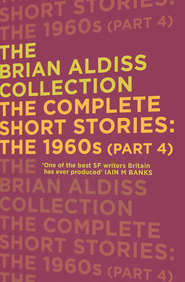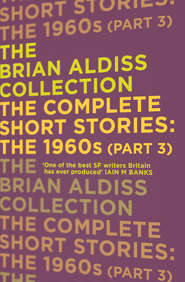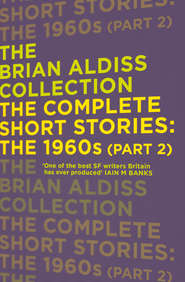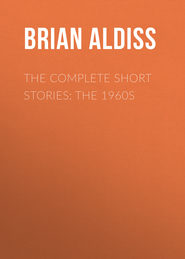По всем вопросам обращайтесь на: info@litportal.ru
(©) 2003-2024.
✖
Report on Probability A
Автор
Год написания книги
2019
Настройки чтения
Размер шрифта
Высота строк
Поля
‘The street is empty.’
‘It’s early yet. Maybe about lunch time.’
‘Mm, I see what you mean. Still, it is nice fresh fish.’
The man made no immediate reply to this, standing behind the folding chair on which S sat, resting his hands on the back of it, and gazing out at the road through his shop window.
S also gazed out of the shop window as he sat eating. He gazed across the road at the house.
Because the house was directly opposite, only the front of it could be observed from the café. It presented a symmetrical picture, with the window to the left of the front door being balanced by the window to the right of the front door. The door itself was painted with a glossy green paint and had a crescent-shaped fanlight over it; it was reached by two curved steps and sheltered by a heavy stone porch, also curved, and supported by two stone pillars.
On the first floor there were three windows overlooking the street, the middle one being placed over the front door; and above this middle window was a small dormer window set in the roof with a small flagstaff protruding above it. The flagstaff bore no flag.
The dormer window, S knew, belonged to an attic room. Of the three windows below, the one on the left belonged to Mr Mary’s wife’s bedroom, while the other two belonged to Mr Mary’s bedroom. On the ground floor, the window to the left of the front door belonged to Mr Mary’s study; the one on the right belonged to the sitting-room.
In none of these windows was there any movement.
‘Not much doing over there this morning.’
To the south-east of the house, facing onto the road, was a garage, separated from the house only by a couple of metres. Although obviously built at a more recent date than the house, it presented some of the aspects of shabbiness. It was constructed of slabs of asbestos and pillars of reinforced concrete, apparently of a prefabricated pattern. Two double doors of a light metal occupied all the front wall of the garage. Above these doors, set under the peak of the roof, was a small square sealed window, its area of glass divided into four by a pair of crossed bars; from one of these small squares, the glass was missing. There was no movement visible through the small sealed window. The garage was covered by a corrugated metal roof.
‘I hear that in a fish shortage the price of fish goes up.’
‘People aren’t as honest as they used to be. But I enjoyed the haddock.’
‘Nice piece of poached haddock, that.’
S pushed the small table forward to that he could get up. He walked round a large case that contained brightly coloured paper books, opened the door, and walked out onto the pavement. A man was hurrying along the pavement wearing a woollen scarf about his neck and carrying a bicycle over his left shoulder; the bicycle had a green hooter and two flat tyres. He did not speak to S. S waited till he had disappeared and then crossed the road, heading for the brown side gate. He opened it and walked in.
Shutting the gate behind him, he drew the bolt into position and commenced to walk along the concrete path, taking care not to tread on the cracks between the concrete blocks. On his left hand was the house, to which he drew nearer as the path led him towards its west corner. On his right was a wooden bungalow; he regarded it from the corner of his right eye, and observed a small movement through the window to the left of the door. As he directed his gaze straight ahead again, his vision took in the image of a black and white cat bounding away from him in a westerly direction, running past a sundial supported by an iron boy. The cat darted through a gap in a privet fence dividing grass from vegetable garden, and was hidden among cabbages. A pigeon sometimes referred to as X rose heavily from the other side of the cabbage patch, circled cumbrously twice, and flew with a clatter of wings towards the old brick building behind the house.
S stepped over a ragged damp patch that spread over the path and continued straight until he reached the west corner of the house, turning it without pause, though at a slower rate.
In the middle of the rear or south-west face of the house was set the back door; at this door the concrete path terminated. S pursued it to within two metres of this terminal point and then turned right, along a path that had been worn in a stretch of grass. The path was muddy from the night’s rain. A sparrow which sat upon it flew off it and perched on a privet hedge as S approached. The path led to a gravel walk heading directly away from the house, and along this S walked. He now had the back of the house directly at his back; on his right hand was a privet hedge that bordered the walk; on his left hand lay three long mounds with furrows between them; these were the asparagus beds; underfoot was the gravel walk, in which, because the gravel was sparse and much trodden in to the earth, small weeds such as groundsel grew, bearing little flowers even at this time of year.
Both furrows and gravel walk led to a two-storey brick building. The brick had turned to a gentle orange with age; much of it was concealed by ivy which grew in several places from the ground up to the guttering. In the front of the building, old grey timbers ran among the brick. The lower half of this façade was mainly timber, and consisted of two heavy doors, the hinges of which had collapsed, letting the bottoms of the doors sink into the gravelly earth. In the upper halves of these doors were the frameworks for a double row of square panes of windows, but most of the panes had been broken and replaced by sheets of wood or cardboard or pieces of sacking; even the panes that remained were curtained by the cobwebs of many generations of spiders. The wood of these doors had attained a texture like elephant hide where weather had wrinkled and pitted it.
Above the old doors, the brickwork began again and continued up to the eaves, interrupted only by a round and dusty window divided into nine panes, the central one of which was square. At the peak of the brickwork, under the V of the roof, a pattern of eight holes was set, their bases streaked with dirt. In one of these holes sat a homing pigeon called X; when it saw S approaching, it fluttered upwards with heavy strokes of its wings and landed on the tiling of the roof.
In one of the old doors, the right hand one, was a smaller door, no more than one and a half metres high. Having reached the old brick building, S put his hand to the catch of this small door and pushed it open. Before entering the aperture, he paused and glanced over his shoulder.
The back of the house was some thirty-five metres away; it stood on a slightly higher level than did the old brick building, for the gravel walk leading to the latter had sloped down a dip in the ground. From this elevation, five windows were visible, excluding the small pane of bottle glass in the centre of the back door. One of these windows was open; this was the downstairs window on the left of the back door; it was the kitchen window, and through it the head of Mr Mary’s wife could be discerned bowed over some business at the sink.
Showing signs of hurry, S bent his back and entered the brick building through the small aperture, pulling the door closed after him and securing it on the inside by a loop of cord attached to the door, which he draped over a nail knocked part way into the ancient timber of the larger door in which the small one was set.
Asheread,Domoladossafeltasenseofprivilege.Aweekago,heandallhismillionsoffellowmenwerelivinginaworldofapparentuni-probability.Thenthisothercontinuummanifesteditself.Whoknew,therecouldbeamyriaddifferentprobabilityworlds?ButhewasoneofthefirsttoreadthereportonProbabilityA.
Heexperienceddangerasheread.Thishouse,andtheouthouseSwasentering–theyweresobanalthatyou’dneverlookatthemtwiceinordinarylife.ButdidProbabilityAcontainordinarylife?Weretheverymoleculesofthebricksdifferent?Orwouldthefactoftheirallbeingthesamemakethewholebusinessevenmoremiraculous?
AndthiswasjustProbabilityA.Amyriadprobabilities…TheGodshadbeennotmerelyprodigalbutmad.
AphotographofhiswifestoodonDomoladossa’sdesk.Hegazedatittenderly.Therewouldbecontinuawheretheyhadnevermet,ofcourse…Thenhereturnedtothereport.
Chapter Five (#uc72d14b3-1fd0-5405-8d07-f21fc8c6d136)
The inside of the old brick building was large enough to house a private carriage such as prosperous people drove in the days before automobiles were invented. The floor space was partly filled by a bench along the right-hand wall; several old oil drums that stood along the rear wall; a motor-driven lawn mower and a miscellany of garden tools that stood or leaned along the left-hand wall; and a number of boxes, broken pieces of furniture, a tin trunk with the initials ‘H.S.M.’ stencilled large upon it, a rusty bird cage, a garden roller, a kitchen mangle with a bicycle leaning against it with flat tyres, a pile of sacks, a petrol can, several lengths of copper piping, and various other oddments, all lying about the floor, chiefly at the rear or south-west end of the brick building.
Also at that end of the building was a solid wooden structure of steps leading up to the room above. S advanced to this structure and ascended the steps, placing his feet with care as well as speed, for the treads had been unevenly hollowed in the middle.
As he ascended, his head, and consequently his eyes, came level with and then rose above the floor of the upper room, a rough, splintery, and uneven floor of old planks which was streaked here and there in no particular pattern with areas of smoothness – round a knot in the wood, or along the side of a board raised slightly higher than its neighbours; these smooth parts were of a lighter yellow tone than the predominant rough areas of wood.
Walking indiscriminately over these areas, S proceeded to the front of the room in eight and a half paces, stopped, and knelt. He could now see out of the round window that was divided into nine sections. Gazing through one of these sections, S stretched out his right hand to a point where the brickwork to the right of the round window curled into a small niche; putting his hand into the niche, S brought out a telescope.
This instrument was familiar to him. He had bought it about fifteen months ago, before Mr Mary had dismissed him, from an antique dealer whose nose was peppered with small white pimples no bigger than freckles. When closed, the telescope measured some fifteen centimetres in length; it was bound in worn leather. S pulled one end of it, revealing three brass tubes which extended out of each other. On the barrel of the smallest tube, the legend 22X was engraved, signifying that the telescope was capable of magnifying objects glimpsed through it twenty-two times. At the top of the smallest tube was the eyepiece, which S now raised to his right eye. Directing the telescope to point towards the house, he closed his left eye and stared with the other through the barrel of the telescope.
He was now viewing the world through five thicknesses of glass, four consisting of the lenses in his telescope and one of the small square panels of glass that formed the centre of the nine glass segments together comprising the round window. These layers of glass lent their slight coloration to the view.
The little circle of his vision was surrounded by black. He could not examine much of the view at one time.
He extended the telescope further. A red mist swam before his staring eye. He closed the telescope slightly. The red mist acquired texture and horizontal and vertical markings. S’s circle of vision slid over the rear wall of the house; it descended; it hovered for a moment on the back door and discerned the pane of green bottle glass that served the back door as a small window; and then it moved to the left, seeing brickwork again before it alighted on the kitchen window.
This window was different from the others of the house. The other windows were wooden framed; this was a window with metal frames. The metal frame was longer than it was high and supported three sub-sections, each of which carried six panes of glass; of these three sub-sections, the middle one was a fixture, but the two on either side of it opened, and had perforated metal bars to secure them when they were open. The window on the right was open at the present, and secured on the third perforation of its metal bar.
The circle of S’s vision slid over the window, came back, and settled on its target. The blackness now eclipsed everything but a tiny portion of brickwork, a sliver of metal frame, part of the open window viewed obliquely because it projected towards the watcher, and the small section of the kitchen framed within this opening.
Within the small section of the kitchen framed in the opening, a proportion of the figure of Mr Mary’s wife was visible. Tinted slightly by the layers of glass interposed between her and the watcher’s eye, she exposed to view, covered by a blue cardigan, something more than half her body from a line drawn by the window sill about ten centimetres above her waist: of her trunk, her left breast and shoulder were clearly visible, covered by the blue cardigan, which in turn was partially covered by an apron, two strings of which ran over the shoulders; possibly because this apron had faded, or because its pattern was small and confused, its colour registered only as a blur through the telescope.
Вы ознакомились с фрагментом книги.
Приобретайте полный текст книги у нашего партнера:
Приобретайте полный текст книги у нашего партнера:











